Noctua sent us two new prototype coolers, and these are the absolute game-changers for the Arm desktop market. Or at least for those trying to put Arm CPUs into a desktop to use as a workstation or a server. The Noctua NH-D9 AMP-4926 is the company’s 4U offering, while the Noctua NH-U14S AMP-4926 is the big 140mm option for best cooling performance. In either case, these are huge steps up from the 2U passive coolers we have seen in the market to date. Once they are out, they will make Arm desktops finally a mainstream option along with the ASRock Rack ALTRAD8UD-1L2T.
Previous State of Coolers
When the ASRock Rack ALTRAD8UD-1L2T arrived both on Newegg and the STH lab, there was a 2U passive heatsink option.
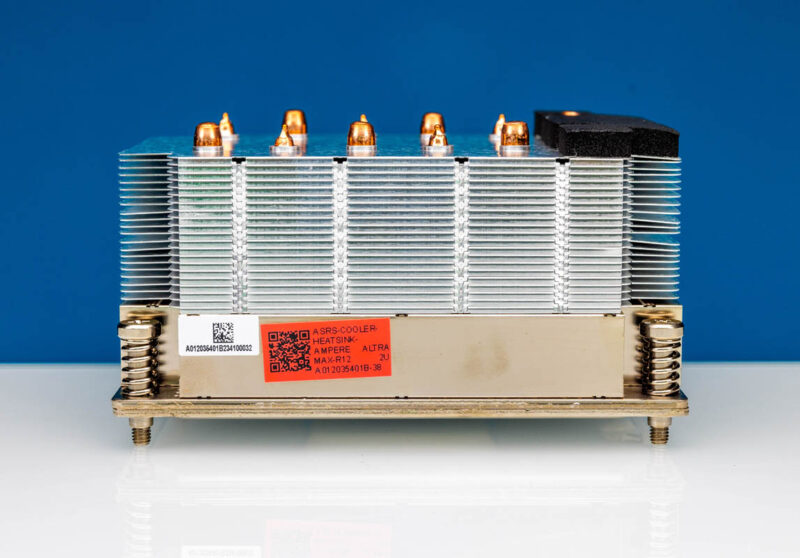
While some folks were screaming to get the bundle, the fact is that the 2U passive heatsink is tough to integrate into a desktop. One can 3D print an airflow guide with fan mounts, but it is far from being easy to plug in and use.
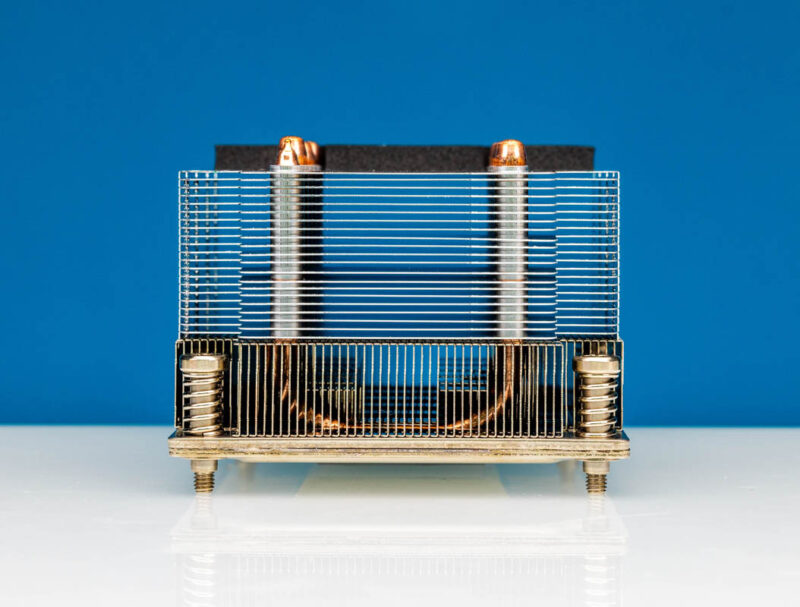
I also knew that Noctua had a line of coolers coming, and those are much easier to integrate.
Noctua NH-D9 AMP-4926 4U
The first, and what will ultimately be the most exciting one for servers is the Noctua NH-D9 AMP-4926 4U cooler.
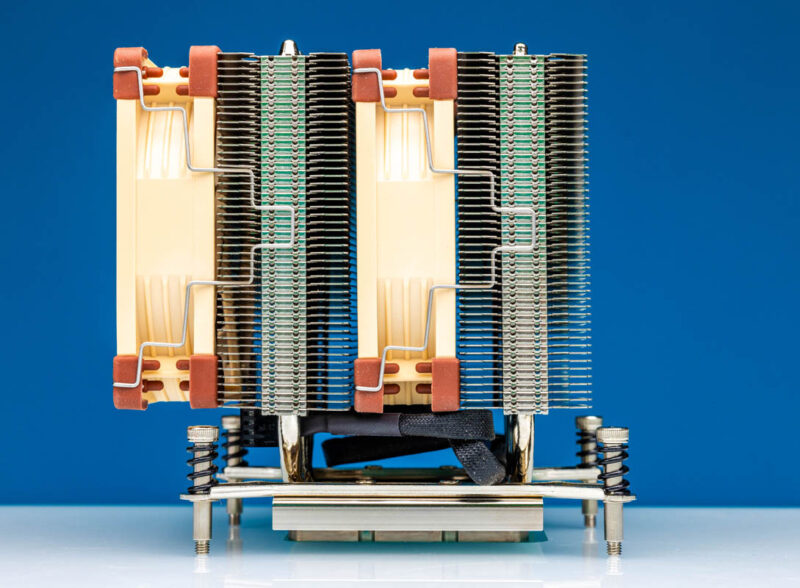
This cooler has two heatpipe towers and two fans.
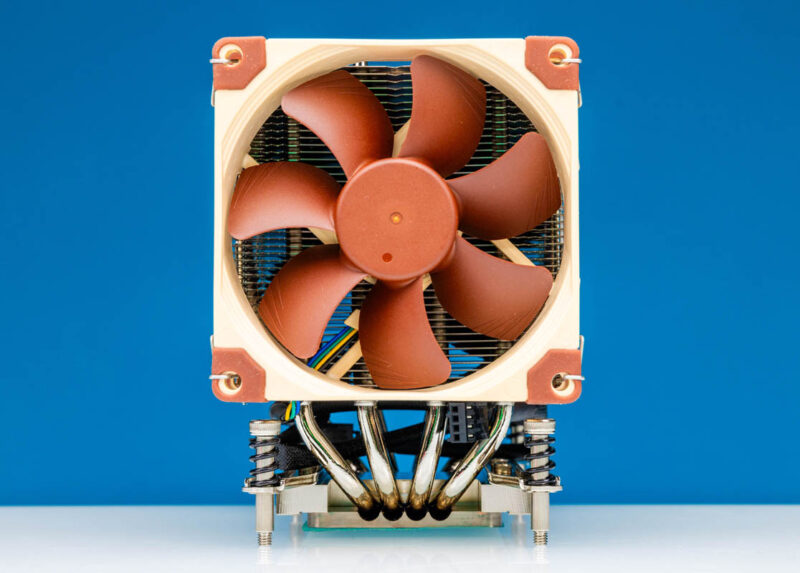
This is a fairly standard Noctua layout but with a cooling plate for the Ampere Altra socket. As a quick note, on both the Noctua coolers the coverage on the CPU heat spreader is much better.
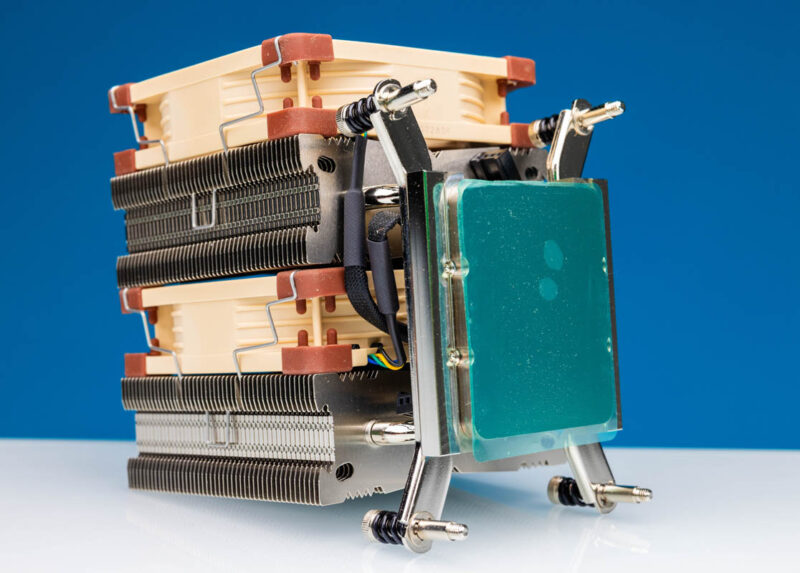
Installed on the ASRock Rack ALTRAD8UD-1L2T we can see that this has standard front to back chassis airflow.
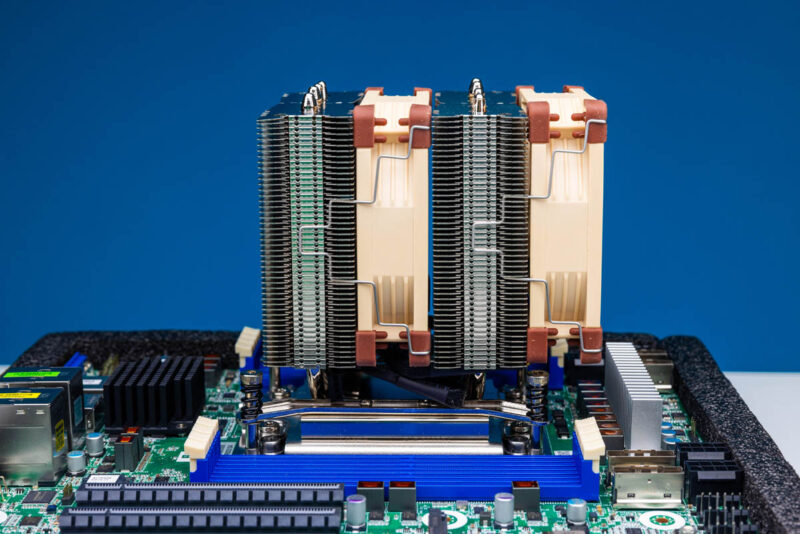
The advantage here is that the 4U height fits in most chassis. It also allows for relatively easy access to the eight DIMM slots around the CPU socket.
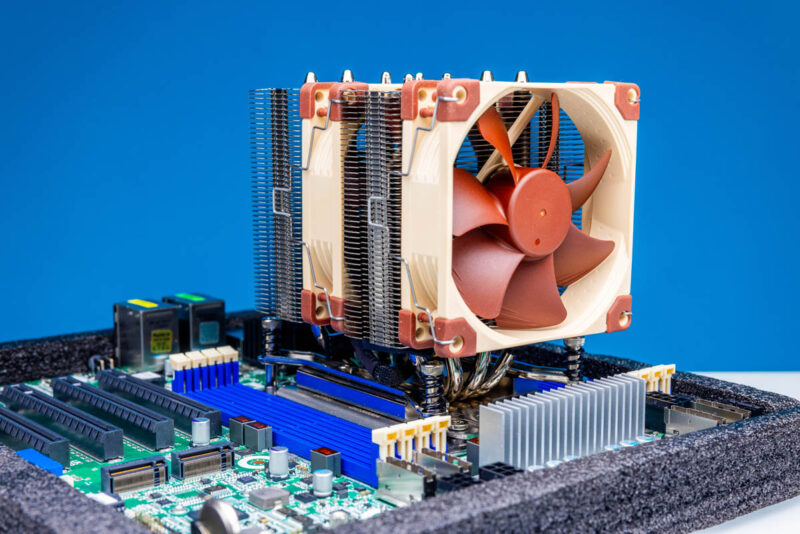
Our sense is that this will be the Altra cooler to get just because it is small enough to fit in most cases and it is plenty to cool the Altra/ Altra Max CPUs.
Noctua NH-U14S AMP-4926
The Noctua NH-U14S AMP-4926 is the big one. The NH-U14S is a popular cooler for many different sockets, but the AMP-4926 tells us this has been adapted to the Ampere Altra (Max.)
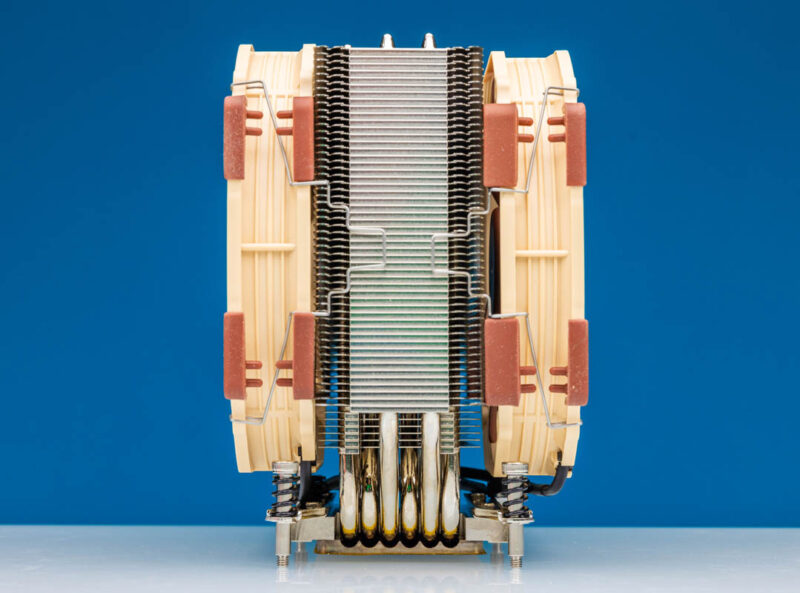
One big difference with the NH-U14S is just the height. Many desktop cases can take 165mm+ coolers, but when it comes to server cases, 4U cases will not fit this cooler.
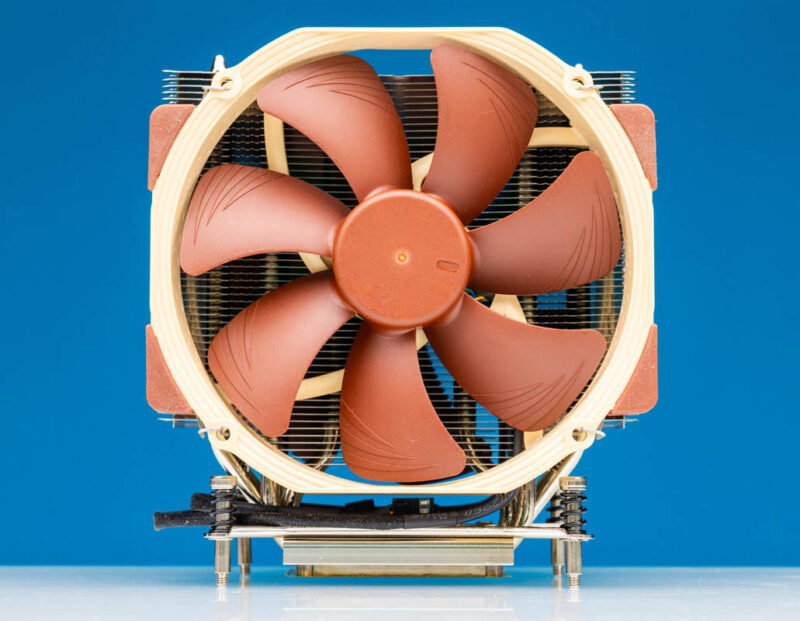
The installation is easy since this is the AMP-4926 specific version.
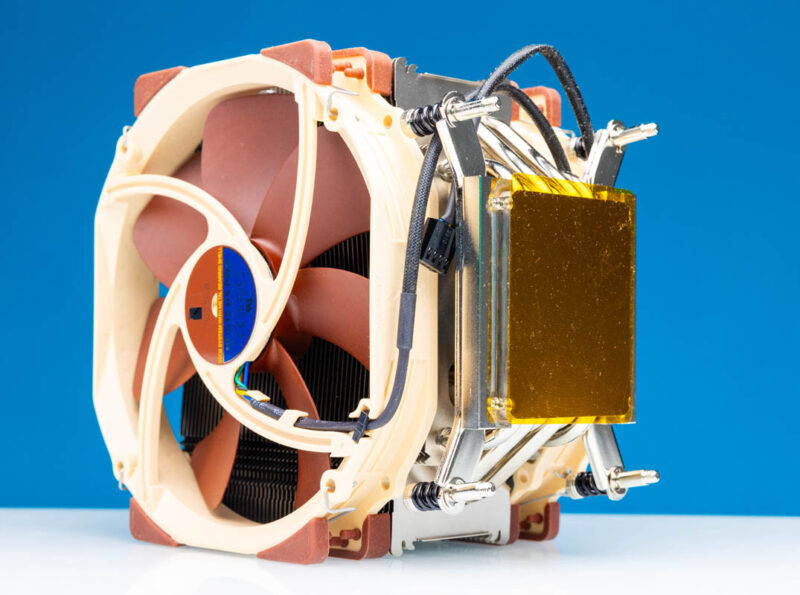
Here we can see the big change in the ASRock Rack ALTRAD8UD-1L2T. The cooler is so big that it has to be top-to-bottom oriented instead of front-to-back. In most 4U workstation/ server chassis, this is not what we would want from an airflow perspective.
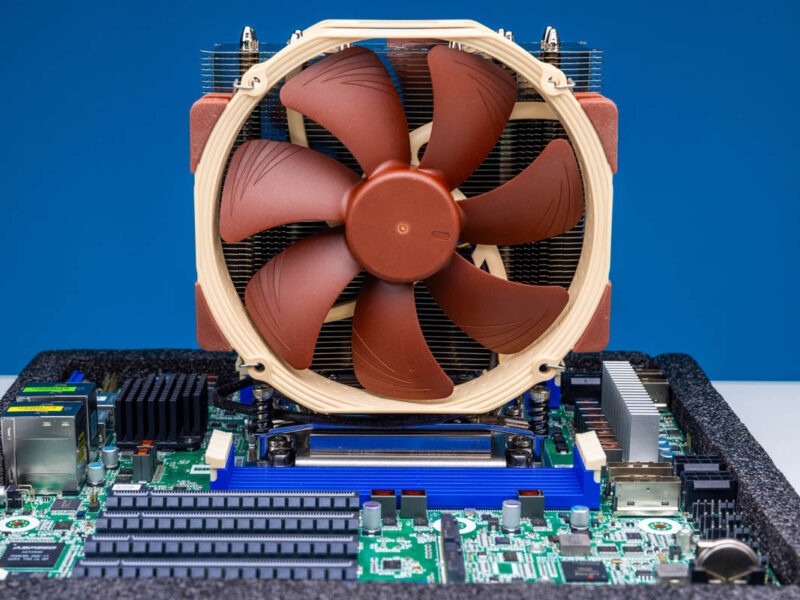
The size of the cooler also gets close to the two innermost DDR4 slots.
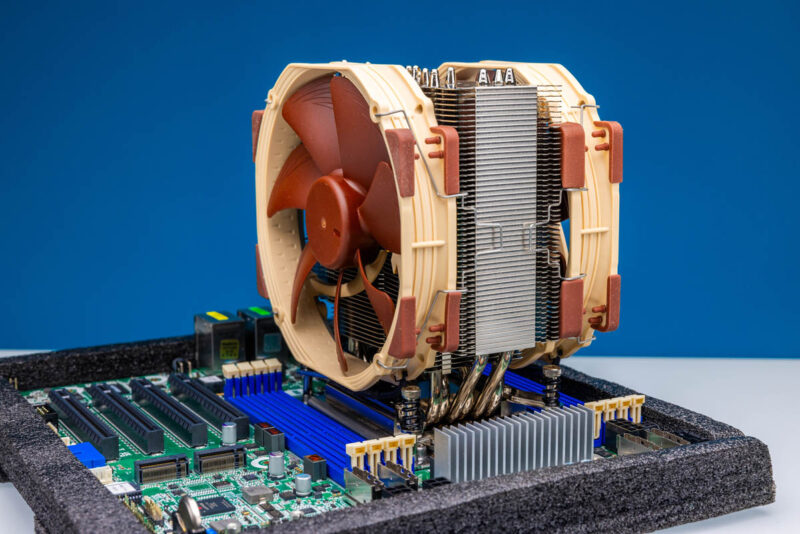
Overall this is a massive cooler, but if you are building in a traditional consumer desktop-style chassis, then this is a great option since normally in those cases there is a top exhaust fan.
Final Words
Having used three coolers with the ASRock Rack ALTRAD8UD-1L2T at this point, the takeaway is clear. The current $1500 Newegg bundle (Newegg Affiliate link) with the motherboard and Ampere Altra Q64-22 (64 core / 2.2GHz) CPU is good, but the 2U passive heatsink is going to be borderline useless for most of our readers. These two Noctua options are game changers. They bring quiet cooling in familiar form factors.
When I first saw the ASRock Rack ALTRAD8U-1L2T, I told both the ASRock Rack and the Ampere folks that this was a winner, but it needed coolers. The Altra chips are not super high power, so liquid coolers are not necessary in desktop cases. These Noctua coolers are prototypes, but they are built on proven platforms so we expect them to be available soon-ish. Once they are, the ASRock platform is going to be awesome for those who want an Arm server platform in either a desktop or 4U chassis.

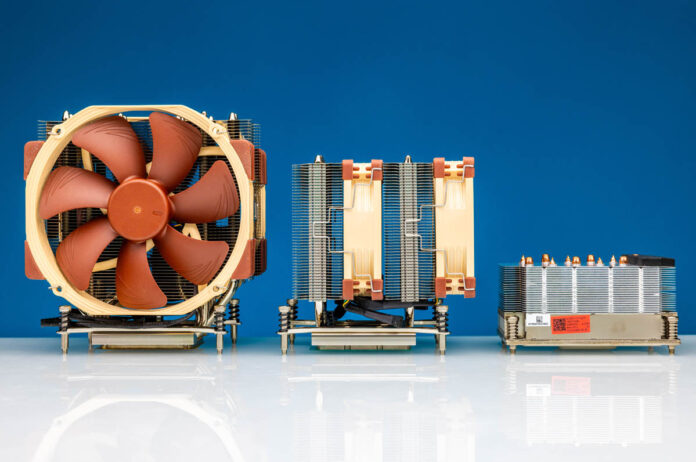
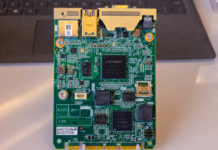


I’d be interested to know how much volume getting LGA-4926 support implies. Noctua typically sells a given cooler design across Intel and AMD, and supports multiple generations of both, so they’re presumably accustomed to being flexible about mounting hardware; but I don’t really have a frame of reference for how much opportunity they’d have to see(or how much NRE cost they’d need to be compensated for; if it’s Ampere looking to give availability a shove) to add socket support.
Is this something where you can slip Noctua a relative pittance to cover a few days of work from one of their CAD guys if you want something for a few hundred dev kits? Will they not bite for less than multiple thousands of units?
Don’t want ARM on the desktop.
If we are going to go through a difficult instruction set transition we should do it once and be done, and move to one that is open and royalty free.
We already have all the issues with Intel trying to control the x86 market with their lawyers and license. This is the opportunity to break free of that, and not just jump into the arms of more problematic proprietary royalty laden IP like ARM.
ARM is noticeably cheaper in the cloud than x86 while RISC-V and Power are respectively nonexistent or more expensive.
I think developers as well as the resulting software benefits from having the same architecture on the desktop as in production servers. While it’s obvious not everyone is writing in assembly or tuning the tool chain, even at high levels of abstraction the performance characteristics of different architectures are still reflected by the available libraries and programming tools.
Said another way, even an experienced software engineer benefits from the freedom to experiment without being charged by the minute when writing and debugging their code.
If Ampere gets to do Neoverse V1 or V2 (versus Neoverse N1/N2), then yes, this can be a definite workstation winner!
@fuzzy:
From what I can see, the base size and the top of soldered base assembly, where the mounting parts are to be installed, has been changed compared to the heatsinks used for the Epyc SP3/SP6 and Xeon LGA4189/4677 socket models.
To get this going you just need detailed socket and CPU package specs (+ideally 3D models), including allowed/desired mounting pressure and keep-out zones. If the only change that has to be made for compatibility involves changing the base-assembly parts and the mounting parts, then it boils down to new CNC programs for the base parts and some production toolings (base soldering).
For the mounting brackets a new stamp-tool will be needed and maybe a different screw/spring, if nothing already used for other cooler models can’t be used. Then it’s going to need testing and validation, plus a user manual – fancy packing is not needed in this case – and the product is ready.
In this case the effort was most likely rather minor, at least from a heatsink/cooler manufacturers perspective, but if they want to make it into a retail product there is still quite a bit of work behind it. The fact that the mounting system is rather simple, more like AMD TRx/SP3/SP6 and not like those Intel Xeon sockets since LGA3647, sure helped a lot in even thinking about such products for a niche platform.
can it run Windows on Arm?
or
Can it run Proxmox VE 8.1 ?